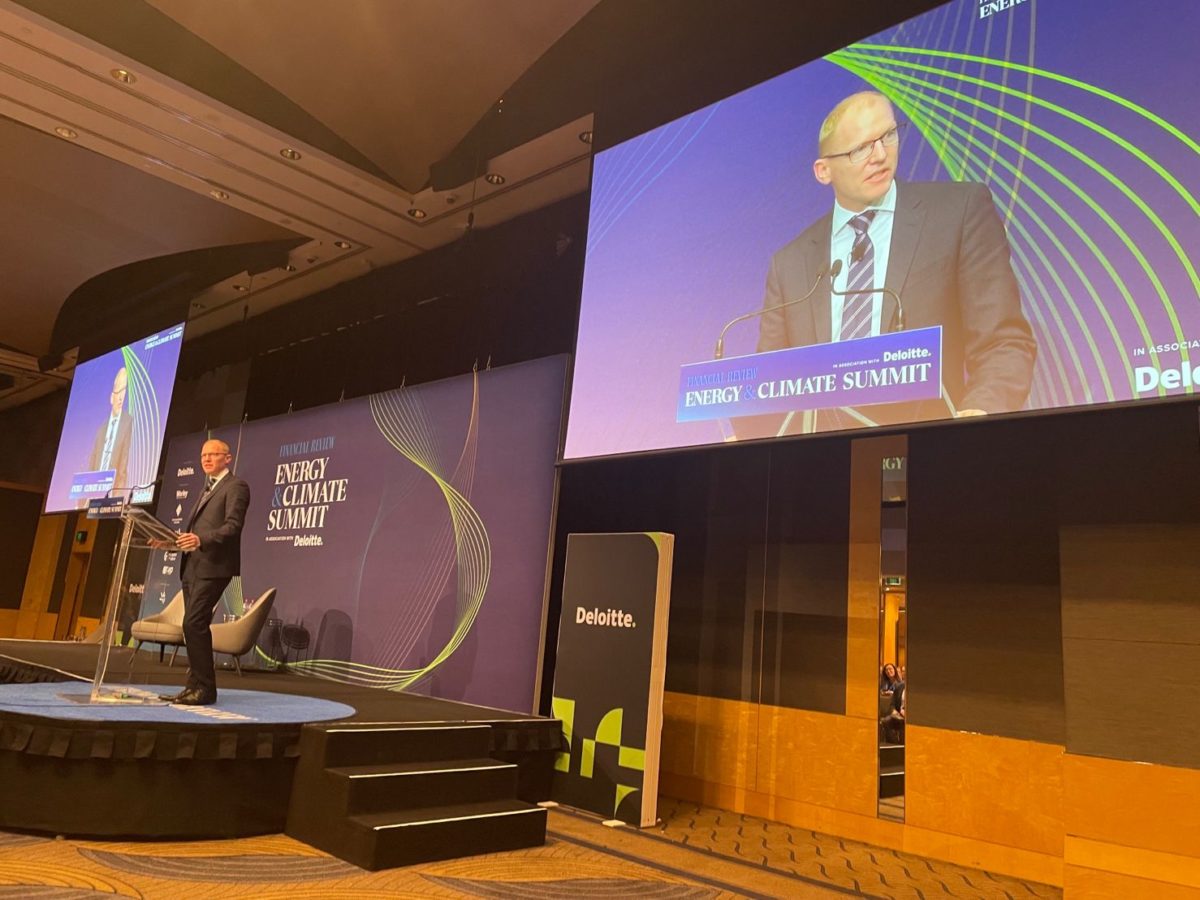The Australian Energy Market Operator (AEMO) chief has called for a “mature conversation” among governments, industry and customers to develop a workable version of a capacity mechanism to drive investment in firming capacity such as pumped hydro and big batteries to back up variable renewable energy like wind and solar power.
Speaking at the AFR Energy and Climate Summit in Sydney on Monday, AEMO chief executive officer Daniel Westerman emphasised the need for a mechanism that incentivises dispatchable capacity as he outlined the scale of what is to be achieved within the next 86 months to meet emissions reductions targets and renewable energy quotas put in place by the federal government.
As part of its legislated target of net zero emissions by 2050, the Australian government is targeting a 43% reduction on 2005 levels by 2030. Meeting the government’s 2030 target will mean boosting renewable energy production to 82% of our electricity supply.
With at least five of Australia’s coal-fired power stations set to close between now and 2030, Australia needs to install 45 GW of new supply by 2030, including about 36 GW from renewable generation like solar and wind.
Westerman said that about 9 GW of new firming capacity like pumped hydro, batteries, and lower-emissions gas generation will be needed by 2030 to unlock those renewables but warned that by 2050 that figure will climb to about 60 GW.
“Our Integrated System Plan (ISP) has highlighted how important these firming investments are to provide a reliable and resilient NEM to offset the closures of ageing generators,” he said.
“By 2050, our central scenario calls for over 60 GW of firming capacity, that’s three times today’s capacity, and a mix of technologies including pumped hydro, batteries of all shapes and sizes, and low emissions gas generation.
“But we simply won’t get this built with the current ‘energy only’ market design. This is why the Energy Security Board (ESB) has recommended a capacity mechanism, to send a clear market signal for investment in firming capacity.”
The idea of a capacity mechanism has been widely criticised with some energy market participants concerned it will delay the retirement of fossil fuel generators, providing the increasingly uneconomic plants with an income stream into the future.
Westerman said he understands that any change to market design is “sensitive and carries inherent risks”.
“That’s why I believe that the design of any capacity mechanism needs a mature conversation between governments, industry and consumers,” he said.
“Collaboration is the key to delivering a mechanism that drives the integration of more renewable energy, and ultimately more affordable energy for Australian homes and businesses.”
The pace of Australia’s energy transition was made blindingly clear at the AFR Energy and Climate Summit.
The audience was told that in the last financial year, 29 projects representing nearly 4 GW of new generation, achieved market registration in the NEM. That’s 1 GW more than the previous year, and nearly 2 GW more than year before that.
And between now and the end of the year, another 19 projects totalling 2.7 GW of generation are also expected to achieve market registration.
AEMO said at the last count, there were nearly 150 individual projects, totalling more than 22 GW in capacity across the four connection stages in the NEM.
“This is a huge pipeline of critically important connections to progress at a rapid pace,” Westerman said. “To benchmark that internationally, California, which has a grid roughly 50% bigger than ours, are aiming for about the same rate of new connections as Australia.”
This content is protected by copyright and may not be reused. If you want to cooperate with us and would like to reuse some of our content, please contact: editors@pv-magazine.com.









By submitting this form you agree to pv magazine using your data for the purposes of publishing your comment.
Your personal data will only be disclosed or otherwise transmitted to third parties for the purposes of spam filtering or if this is necessary for technical maintenance of the website. Any other transfer to third parties will not take place unless this is justified on the basis of applicable data protection regulations or if pv magazine is legally obliged to do so.
You may revoke this consent at any time with effect for the future, in which case your personal data will be deleted immediately. Otherwise, your data will be deleted if pv magazine has processed your request or the purpose of data storage is fulfilled.
Further information on data privacy can be found in our Data Protection Policy.